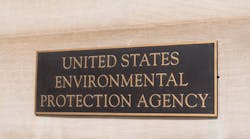Representatives from the oil and gas industry clearly were in the minority when the US Environmental Protection Agency held its Nov. 14 public meeting in Denver about possibly changing New Source Performance Standards that were enacted in 2016.
Witnesses from the American Petroleum Institute, Western Energy Alliance, and Colorado Oil & Gas Association were scheduled to testify alongside speakers from various Sierra Club chapters, the Environmental Defense Fund, and six from Moms Clean Air Force.
EPA proposed the changes on Sept. 11. They are aimed at streamlining implementation of air emissions control requirements for oil and gas operations, reducing duplicative EPA and state requirements, and markedly decreasing unnecessary burdens on US energy producers, the agency said at the time.
Environmental organizations quickly called the proposal a regulatory rollback. Earthworks planned to project a giant optical gas imaging video of what it said was oil and gas methane pollution onto a downtown Denver building the night before the public meeting. Oil and gas groups have said previously that such images reflect emissions from all sources and fail to separate those from the industry’s upstream activities from the overall total.
“Technical corrections are necessary to assure regulations reflect the current improved technology,” API Senior Regulatory and Scientific Affairs Director Howard J. Feldman explained on Nov. 13.
“There are significant capital investments under way right now to advance new technologies. The agency’s interference could slow this advancement down,” he told reporters during a teleconference before EPA’s public meeting.
API intended to ask EPA to avoid duplicative regulations that provide little or no environmental benefit, Feldman said. Duplicative record-keeping requirements occur when one version is required for a state and another for EPA. This simply consumes manpower without providing additional benefits, he pointed out.
Field measurements matter
“We also urge the agency to consider field measurements, which have been gathered by the industry,” Feldman said. “When companies send people into the field to do a leak detection, they learn information that might make it unnecessary to do inspections as frequently. We’re looking for clarifications and modifications that we think would improve the final rule and make it easier to comply with.”
Feldman noted that API asked EPA to reconsider some of the 2016 regulations soon after they were issued. “Companies should have the flexibility to do inspections annually instead of every 6 months in many cases. Data we have submitted to EPA show the occurrence of leaks is much lower based on our field data than what EPA has assumed. Companies will concentrate on where they can get the most cost-effective reductions of methane. That’s what we’re focusing on,” Feldman said.
